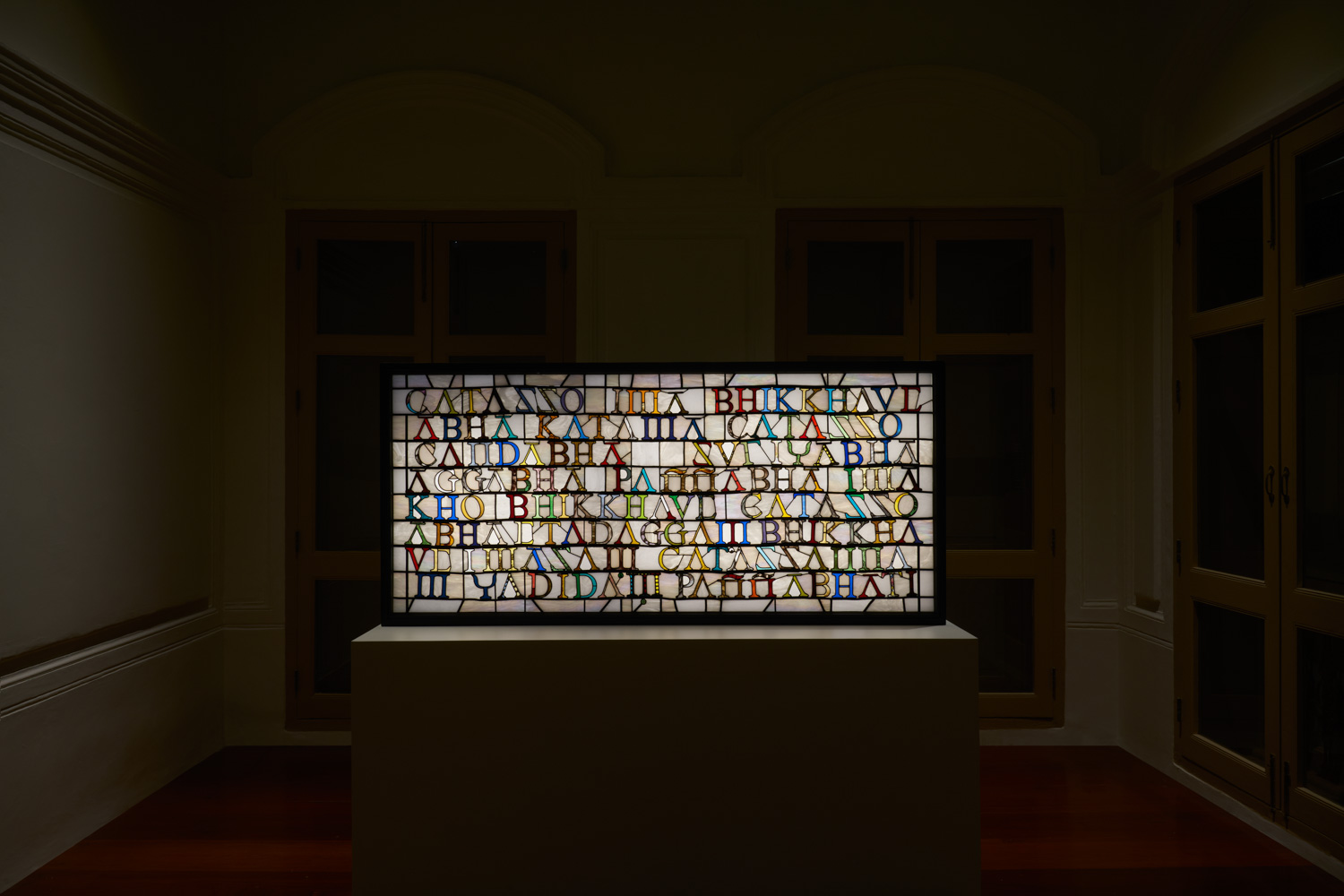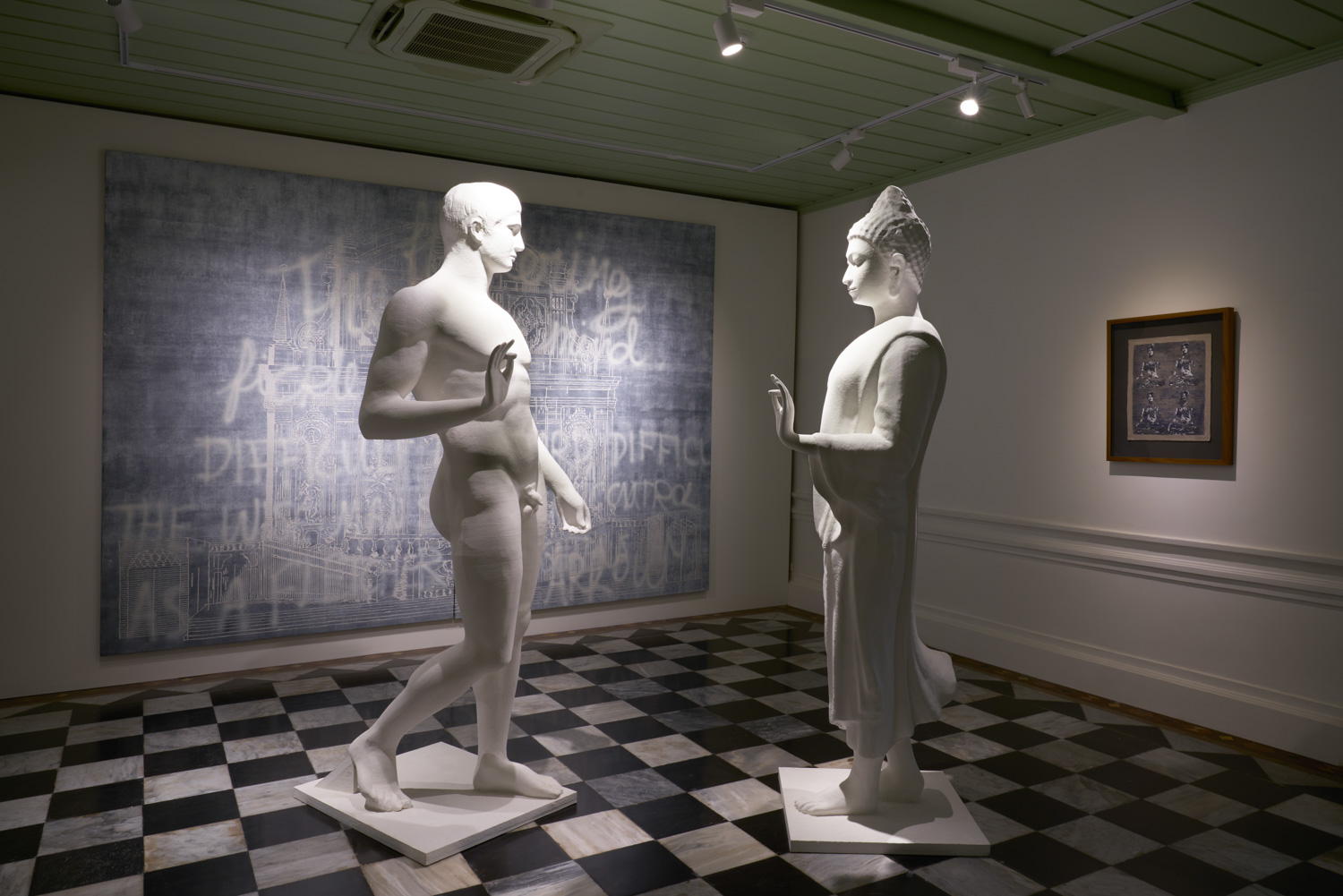THE SUN RISES IN THE WEST. BUDDHA HYPOTHETICALLY APPEARS IN THE GRECO-ROMAN WORLD. NATEE UTARIT REVISIONS HUMAN CIVILIZATION AND WISDOM IN DÉJÀ VU: WHEN THE SUN RISES IN THE WEST EXHIBITION, ASKING A CRITICAL QUESTION THROUGH HIS TENS OF WORKS — “WHAT WILL HAPPEN IF ASIA WAS THE CENTER OF THE WORLD’S CIVILIZATION INSTEAD OF THE WESTERN WORLD?”
TEXT: VICHAYA MUKDAMANEE
PHOTO COURTESY OF THE ARTIST AND THE ART CENTER, SILPAKORN UNIVERSITY
(For Thai, press here)
I walked into a library with the intention to look for books I could use for my thesis. The bibliography of a work of a British academic I’d been using as a reference cites a whole bunch of books and articles that should have been useful for the subject I was writing. Most of them were works of foreign writers, artists and art historians. I sat down and started reading, going over one book to another. After a while, I just stopped and examined a question that popped in my head. A lot of the subjects I have been studying revolve around Thai society, but how come most of the information I came across was written by western academics? Many of them were penned from the experiences when ‘they’ were traveling in Thailand, studying from our sources of information. There were a few works by Thai authors but they were surprisingly hard to come by…I was quite exhausted by doing cross-translation, between the western style of writing and the Thai contexts and meanings that I’m familiar with. I couldn’t help but feel bad and wonder why these foreigners know Thailand better than most Thai people. Was it because we didn’t have that many academic writers? Perhaps I didn’t do enough searching….or was it because the information and writing methods of the works written by Thai people aren’t credible enough even though the subject we wrote about was ourselves?
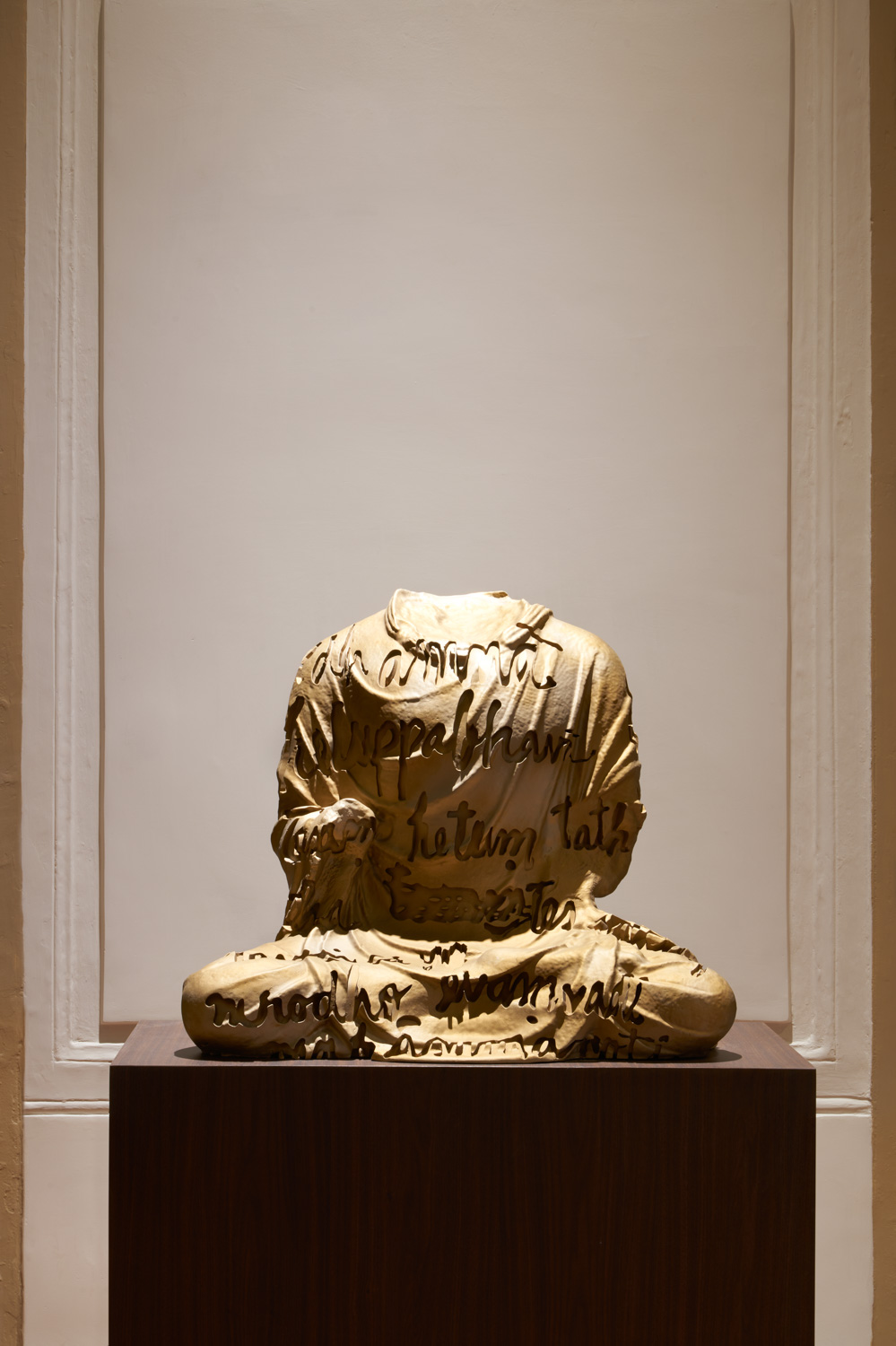
I walked into “Déjà vu: When the Sun Rises in the West,” a solo exhibition by Natee Utarit, one of the most renowned contemporary Thai artists in the international art arena, hosted by Silpakon Art Gallery together with Richard Koh Fine Art, reminiscing my own personal experience when I was drowning myself in books about Buddhist philosophy several years ago. One of the reasons that the Déjà vu exhibition took me back that far into my memories was probably because of the imagery of Buddha sculptures and Buddhist monks found in almost every artworks displayed at the exhibition. The artist uses these figures to convey the essence of Eastern art and civilization, partly perhaps due to the important question he asked through the tens of works created using different techniques and mediums in the exhibition—‘What will happen if Asia was the center of the world’s civilization and developments instead of Europe of the United States like they are now.? The biggest reason has to be the fact that this question hits a sensitive spot that many Thai artists and academics share, for we have all been asking the same question; why aren’t our voices as loud as those of the Europeans and Americans?
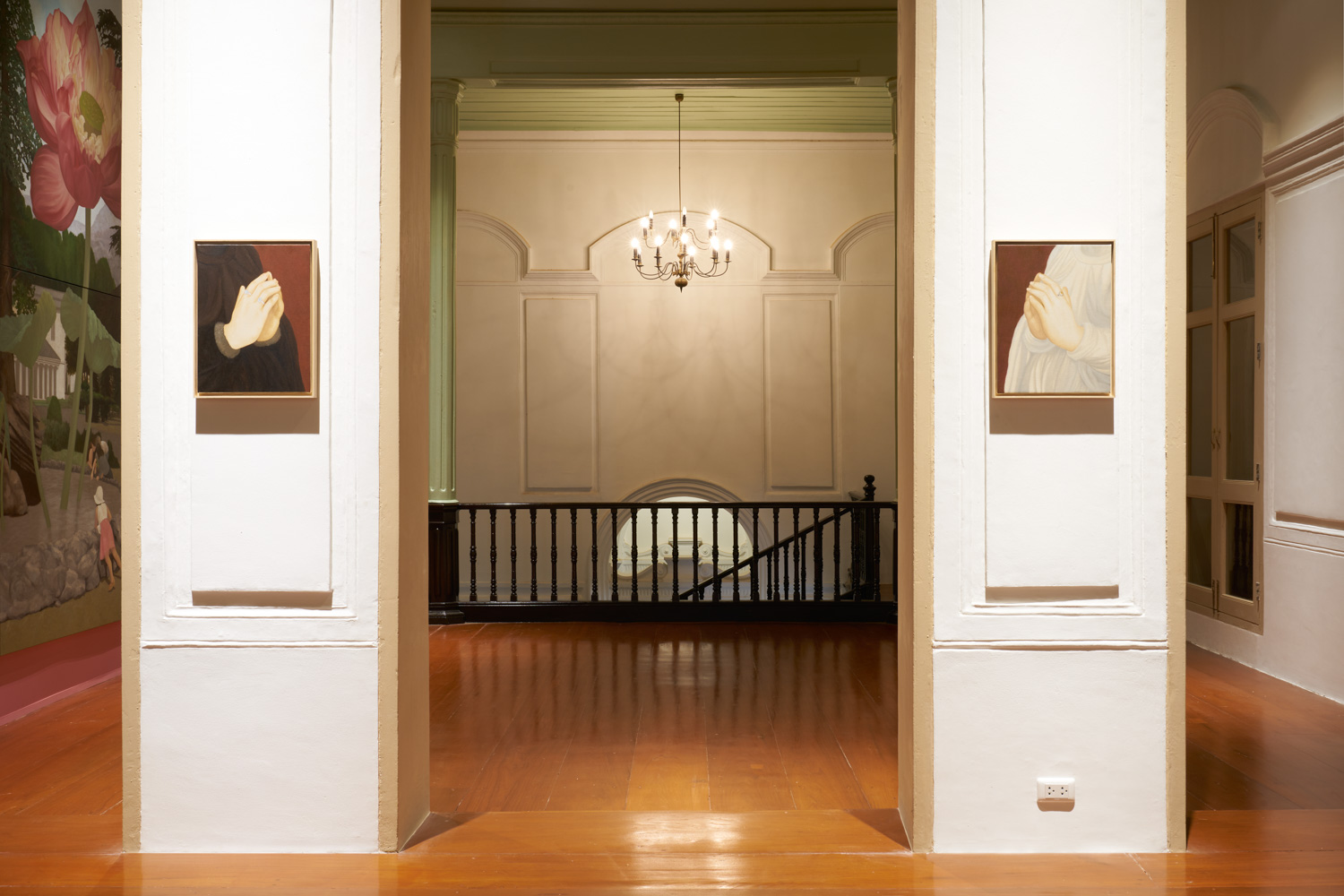

“Déjà vu: When the Sun Rises in the West” is the artist’s latest solo exhibition. It is also the first time ever since his graduation that Natee has had a solo exhibition in the perimeter of Silapakorn University, and its one of the few shows he’s done in Thailand. Déjà vu puts together several tens of his art pieces into one place with Loredana Pazzini-Paracciani, an Italian curator with a strong interest and passion for Thai and Southeast Asian Contemporary art, as the special curator. The true genesis of the exhibition, however, lies in the artist’s profound intensity in the history of Western art to the point where he started making a connection with a hypothesis, which revolves around the scenario where Western civilization has been acknowledged in the global context. It’s undeniable to say that such a phenomenon is a result of colonization, in which western nations, both European countries and America were expanding their governing and trading power, alongside their bodies of knowledge, art and cultures, to almost every part of the world.
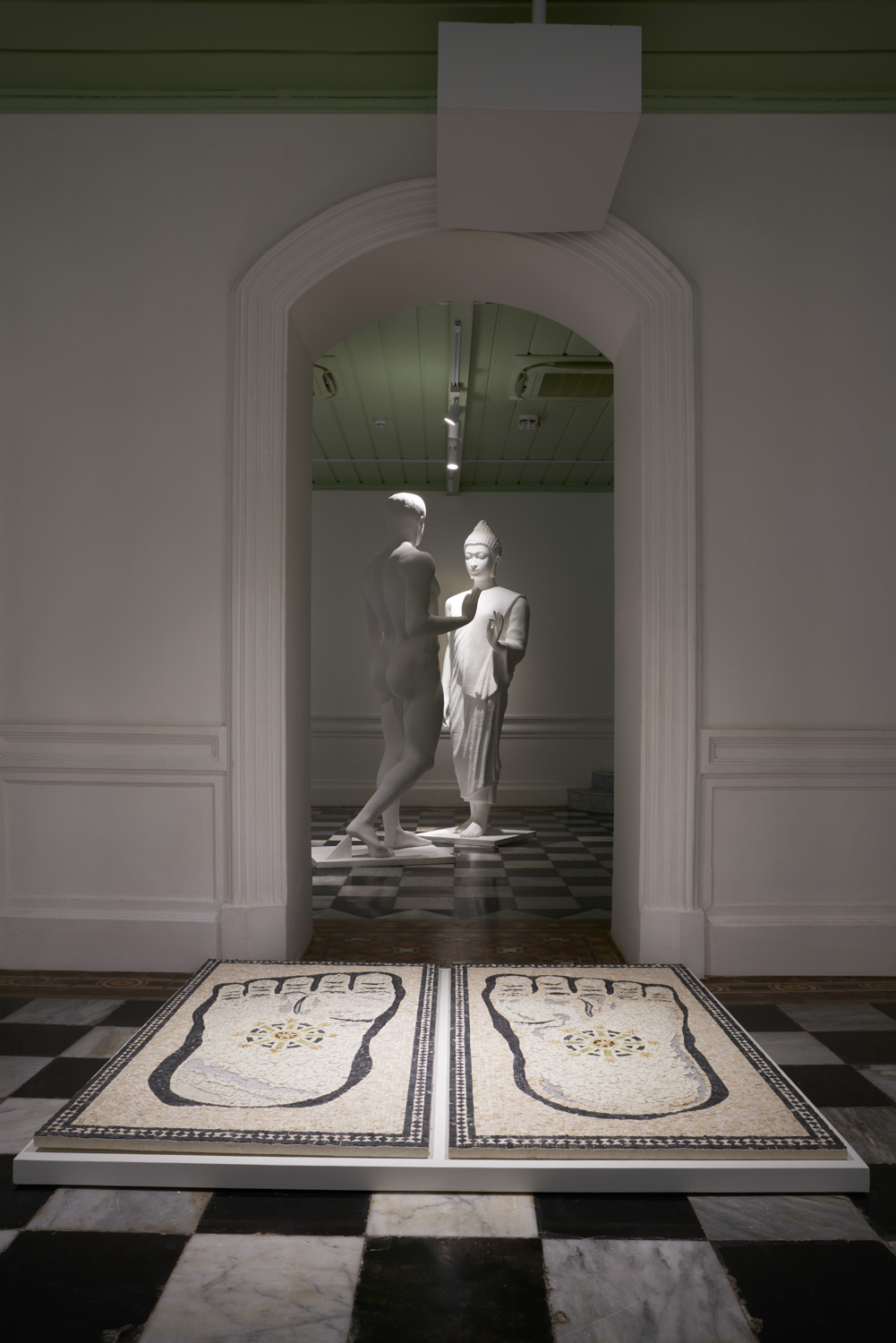
Déjà Vu (2019)
Natee creates a make-believe world by incorporating different symbols in Buddhism, Dharma teachings and imagery representing a fragment of tales, beliefs and history of the Eastern world, particularly Thailand, and how they were clashed, intervened and fused into European art. One of the works is a massive 5-meter oil painting on canvas titled ‘ The Dream of Siamese Monks (2020).’ It is the painting of a Buddhist monk, standing and pointing a finger at the gigantic lotus flower blooming in the middle of the western-looking natural landscape and residential area. Natee takes inspiration from the mural painting ‘Dharma Riddles’ by Krua In-kong. The mural painting at Wat Bowon Niwet Worawihan Temple is that of a big lotus flower blooming in the middle of a pond. Created back during the reign of King Rama 4, the work is one of the most prominent pieces of art that shifted the norms and conventional beliefs in mural paintings, from the Three Worlds to the conveyance of lessons and teachings through the use of metaphors. The change was an attempt to reform Buddhism into a religion centered around the cause and effect principle, corresponding with the intention to reform the country into a modern state in the time when pressure from the European nations and France intensified, and the country was on the brink of being colonized.
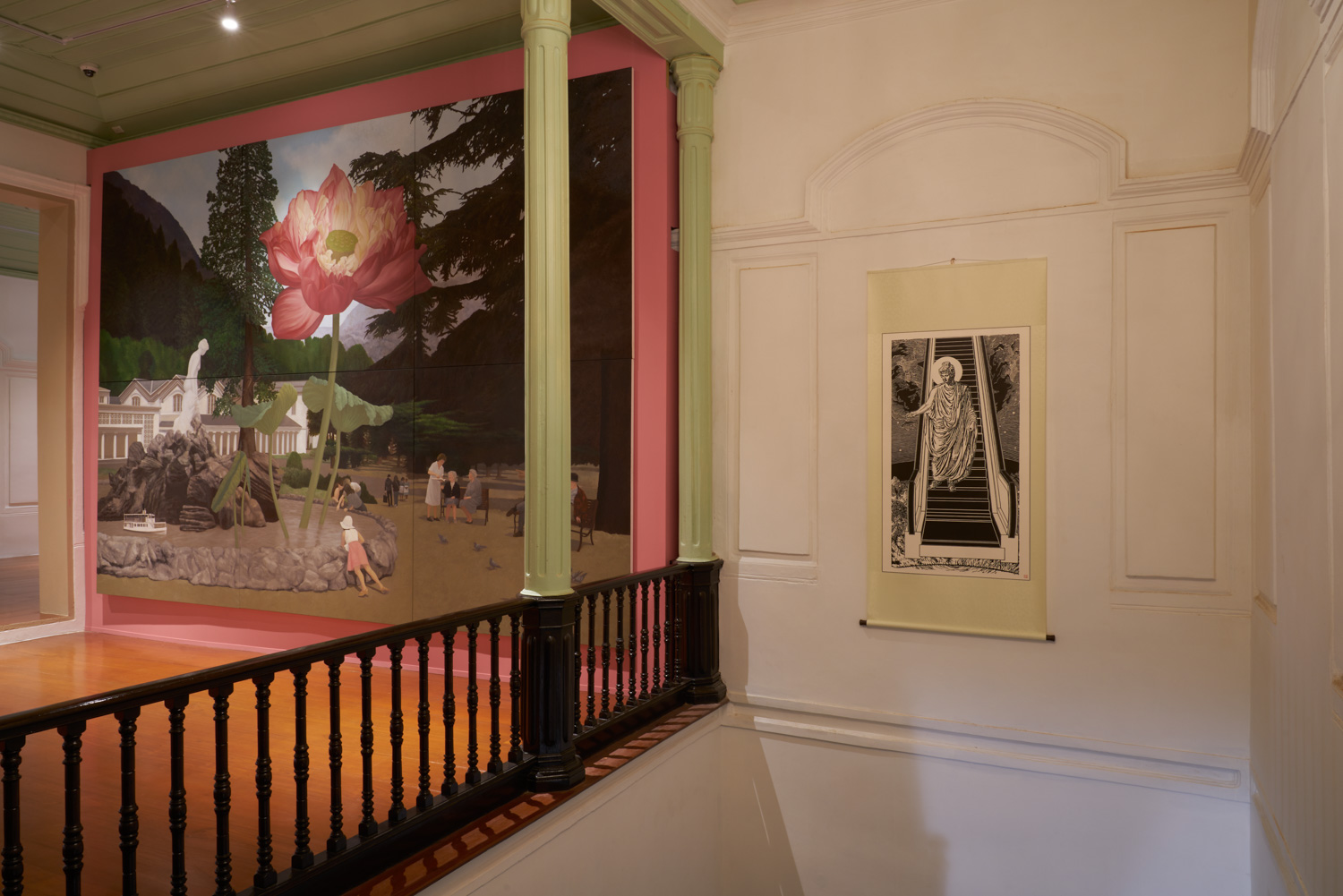
Left: The Dream of Siamese Monks (2020)
The Reclining Buddha with Volcano (2019) is the oil painting of a golden Buddha sculpture in the reclining posture placed at the center, surrounded by a number of Greek columns with European architecture and volcanoes in the background. The artist was inspired by a piece of European painting, Architectural Veduta (it is speculated that the work was created in around 1490), which is believed to be one of the paintings that reflects an ideal version of a city and society. Architecture and urban planning are designed to fit an organized social structure, which was a result of a successful and righteous governing system, according to the West. Another example reveals itself in the form of an oil painting, Temple of the King (2019), inspired by the painting, The Flagellation of Christ, by Piero della Francesca (its speculated creation dates between 1468 and 1470. Natee changes the characters in the background of the original painting, which are the Christ and his executioners, into those of a long-haired man surrounded by a group of tourists with a Buddha sculpture placed on a high pedestal. The three men conversing at the foreground of the original painting are replaced with a Buddhist monk, a governmental official and a young man dressed in an attire resembling that of a European nobleman. The two works are filled with symbols for viewers to interpret, make connections with their memories, linking the past to the present, the East and the West, as well as critiquing the superimposed relationships between the ideal and real world.

The Reclining Buddha with Volcano (2019)
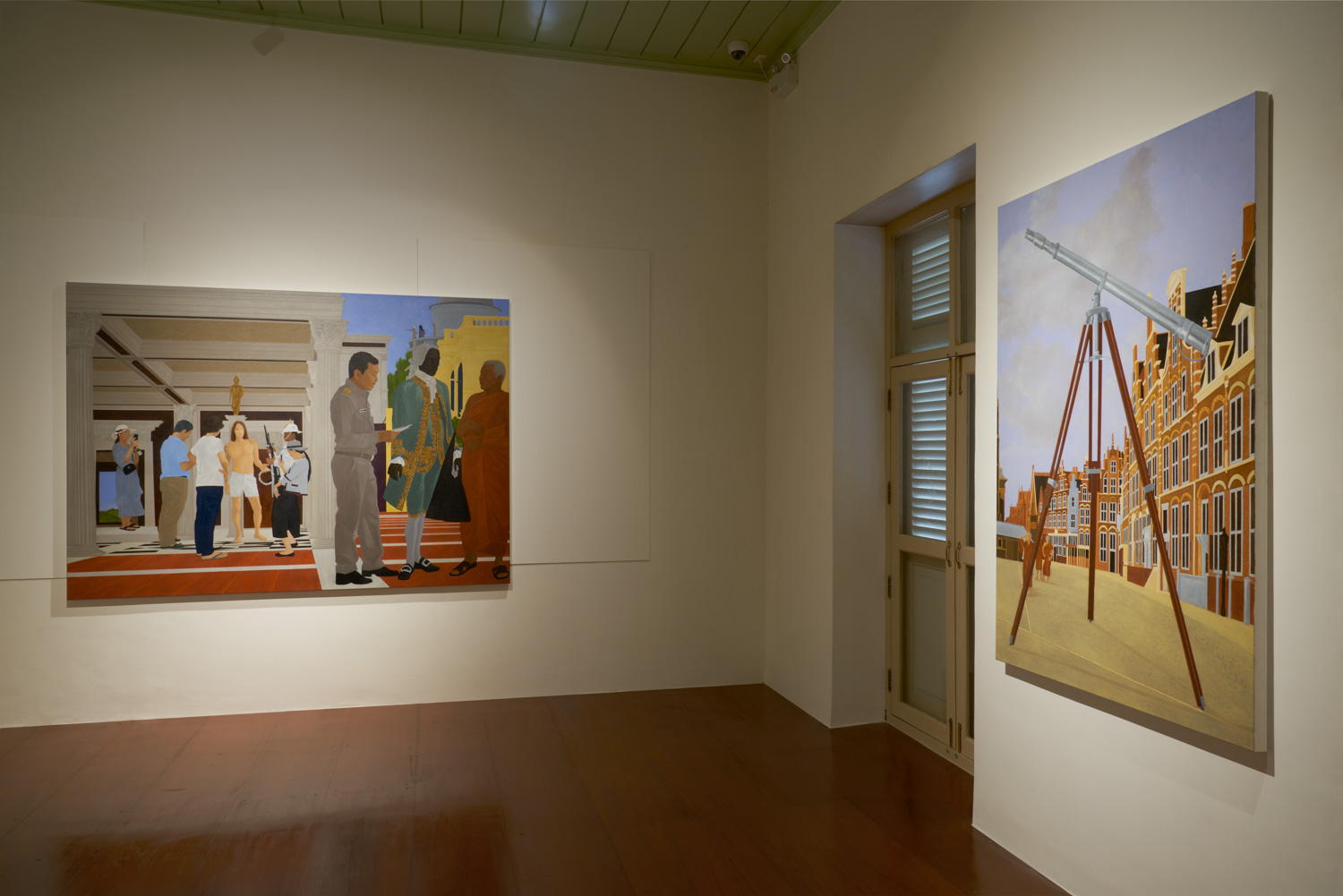
Left: Temple of the King (2019)
Apart from the paintings, the exhibition also features several pieces of sculptures, all with certain implications of the clash between the East and the West, questioning the meanings of totems and their similar and different aspects in cultures, including how those meanings have been derived from entirely different societal contexts, philosophical foundations and ways of life. Déjà Vu (2019) is a white Buddha sculpture, which has the gargantuan Walking Buddha Statue of Buddha Monthon (Buddhism District) in Bangkok as the reference (the statue was designed by Professor Silpa Bhirasri, the Italian sculpture who came to Siam during the reign of King Rama 6 and later become the founder of Silpakon University). The sculpture is installed to face toward another a white statue sculpted in the form of a nude Greek male posing with a hand gesture similar to that of the Buddha sculpture. Death of Buddha (2020) is another Buddha sculpture in the reclining posture created to have combined elements of realistic proportions of a human body and the ideal features of Buddha sculptures such as the “snail-shell” curls of the hair, the incredibly long ears, the sleeping posture that lies flat on the white rectangular base. It’s inevitable that the work initially reminded me of the sculpture of the Christ in a coffin, and differences and commonalities of the meanings of ‘death’ in Asian and European cultures.

Déjà Vu (2019)
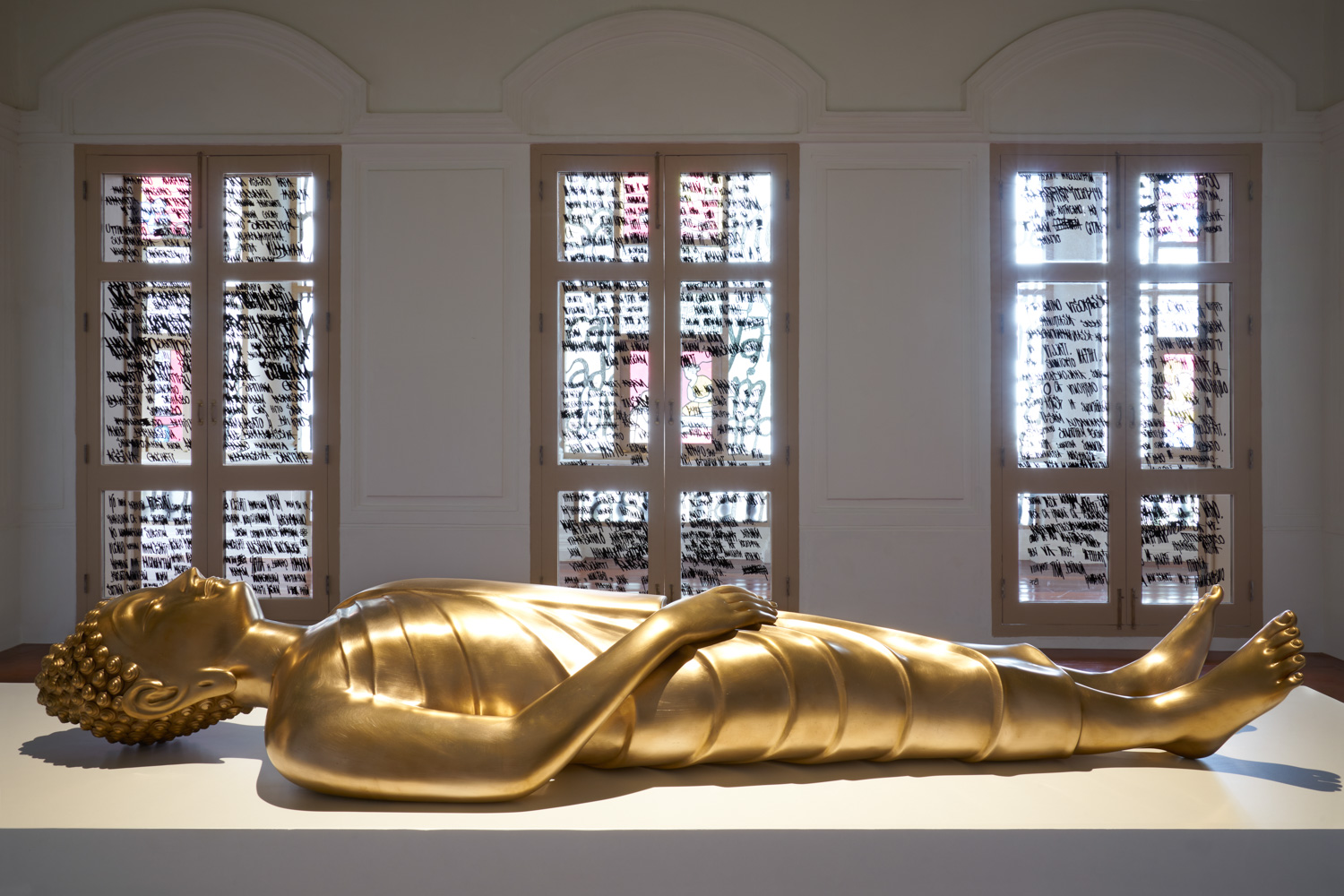
Death of Buddha (2020)
In addition to the paintings and sculptures mentioned earlier in this article, the exhibition also includes artworks that Natee created using different techniques from stain glass, embroidery, woodcut, mosaic, etc., all of which can be linked to the history of European artistic creations. Not only that, Natee incorporates the artistic characteristics of graffiti art such as letters and images created by the use of colored sprays to some of the works, both paintings and sculptures, to convey the stories, subject matters, words, and Dharma lessons he wishes to communicate with the audience.

“Déjà vu: When the Sun Rises in the West” is now showing at Silpakorn Art Gallery, Thapra Palace campus, Silpakorn University, Bangkok, until May 7th, 2022, Mondays-Saturdays, 9.00 – 18.00.
